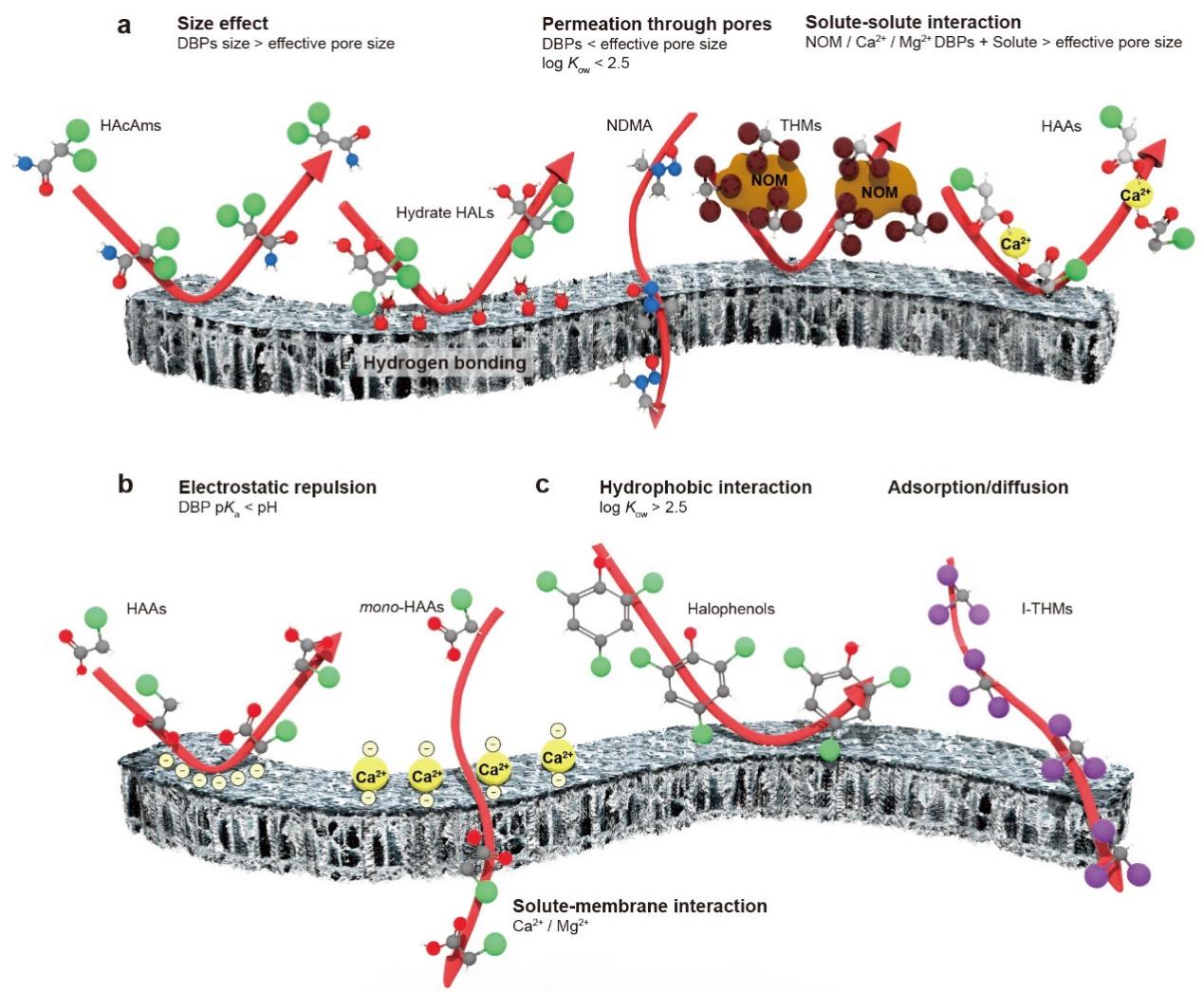
Disinfection byproducts (DBPs) are harmful chemicals that form when disinfectants react with natural organic matter and other precursors during water treatment and distribution. Over the past 50 years, more than 6,300 DBPs have been identified, many of which pose significant risks to human health and the environment. Nanofiltration (NF) and reverse osmosis (RO) membranes show great promise for removing these contaminants; however, their actual removal efficiencies and rejection mechanisms, as well as factors influencing their performance, remain largely unexplored.
To tackle this challenge, a collaborative research team conducted a comprehensive analysis of NF and RO technologies in the context of DBP removal, highlighting both their potential benefits and current limitations. Their findings were published in Nature Water.
The study outlines the origins and hazards of DBPs, the evolution of research in this field, and the technological advancements needed for effective removal of these chemicals. It emphasizes the unique challenges posed by the chemical diversity and structural complexity of DBPs, which make them more difficult to eliminate compared to other micropollutants when using NF and RO membranes.
Further analysis reveals that membrane properties, DBP characteristics, feed solution chemistry, and operational parameters for membrane use (e.g., temperature, pH, water flux, etc.) all play critical roles in determining the efficiency of DBP removal. To make this information actionable, the researchers classified 59 DBPs studied in NF/RO applications into four major groups and identified the dominant removal mechanisms for each. This classification establishes a foundation for a proposed framework to guide future research and practical applications.
The framework itself comprises five key areas: (1) standardization of membrane characterization techniques; (2) development of robust models to predict DBP removal under realistic water conditions; (3) emphasis on the rejection mechansims of small and neutral DBPs; (4) innovations in NF/RO technologies to meet consumer needs; and (5) design of tailored membranes optimized for micropollutant removal.
This study highlights the need for methodological advancements and technological innovations to improve DBP removal. Additionally, it also offers a potential roadmap for advancing membrane-based water treatment by supporting broader efforts aligned with the United Nations Sustainable Development Goals, particularly SDG 3 (Good Health and Well-being) and SDG 6 (Clean Water and Sanitation).
The research team includes members of the Wuhan Botanical Garden at the Chinese Academy of Sciences and scientists from Harbin Institute of Technology (Shenzhen), the University of Hong Kong, and Tiangong University. This study was supported by the National Natural Science Foundation of China, the Hubei Provincial Natural Science Foundation, the Knowledge Innovation Program of the Wuhan-shuguang project, and various other funding sources.

Rejection mechanisms for disinfection byproducts(DBPs) by nanofiltration/reverse osmosis. The rejection efficiency of DBP, similar to other organic micropollutants like pharmaceuticals and personal care products or endocrine-disrupting chemicals, is primarily governed by (a) size effects (also known as size exclusion and steric hindrance), (b) electrostatic repulsion, and (c) solute-solute/membrane interactions, influenced by membrane, DBP, and solution properties. (Image by Dr. WANG Lei)

86-10-68597521 (day)
86-10-68597289 (night)

52 Sanlihe Rd., Xicheng District,
Beijing, China (100864)

